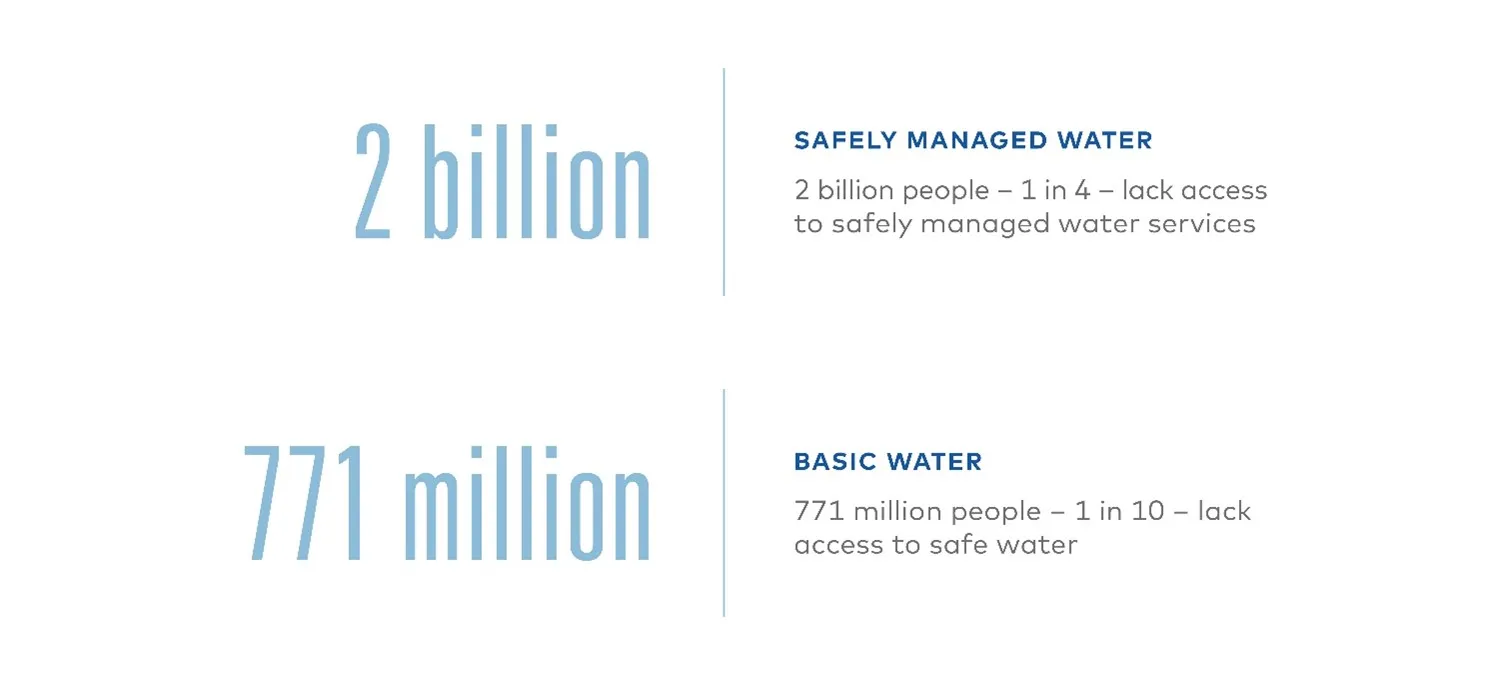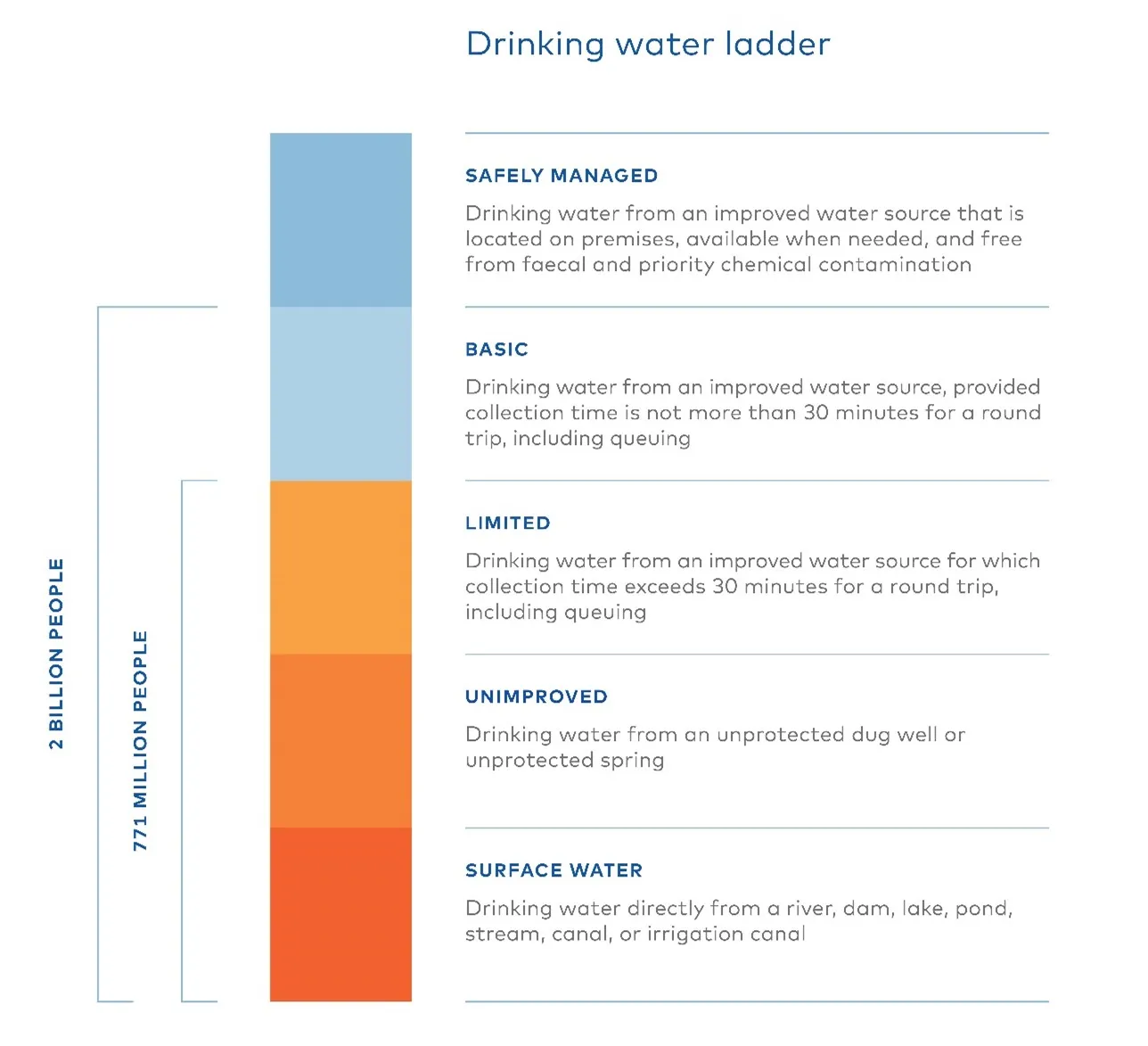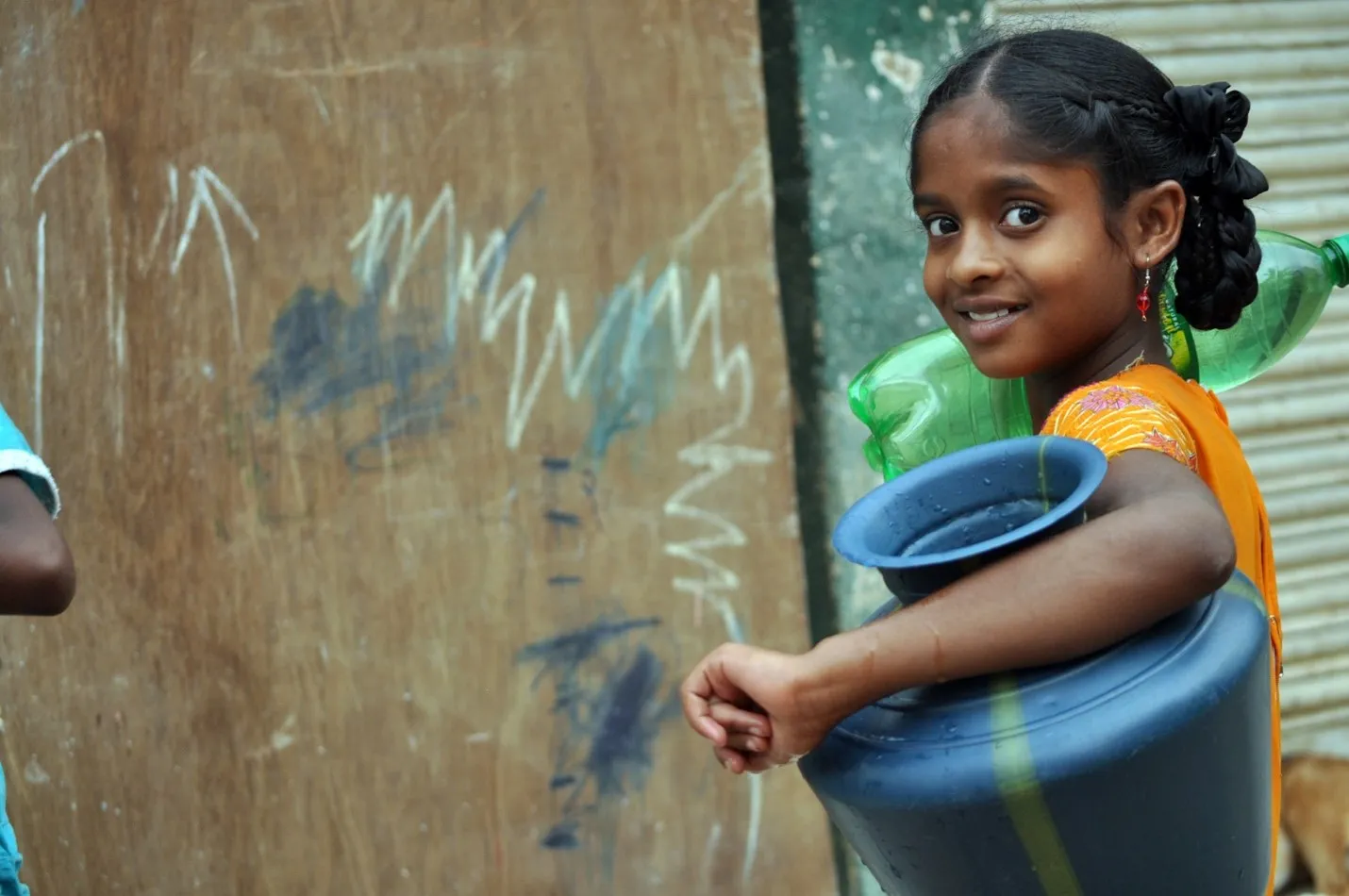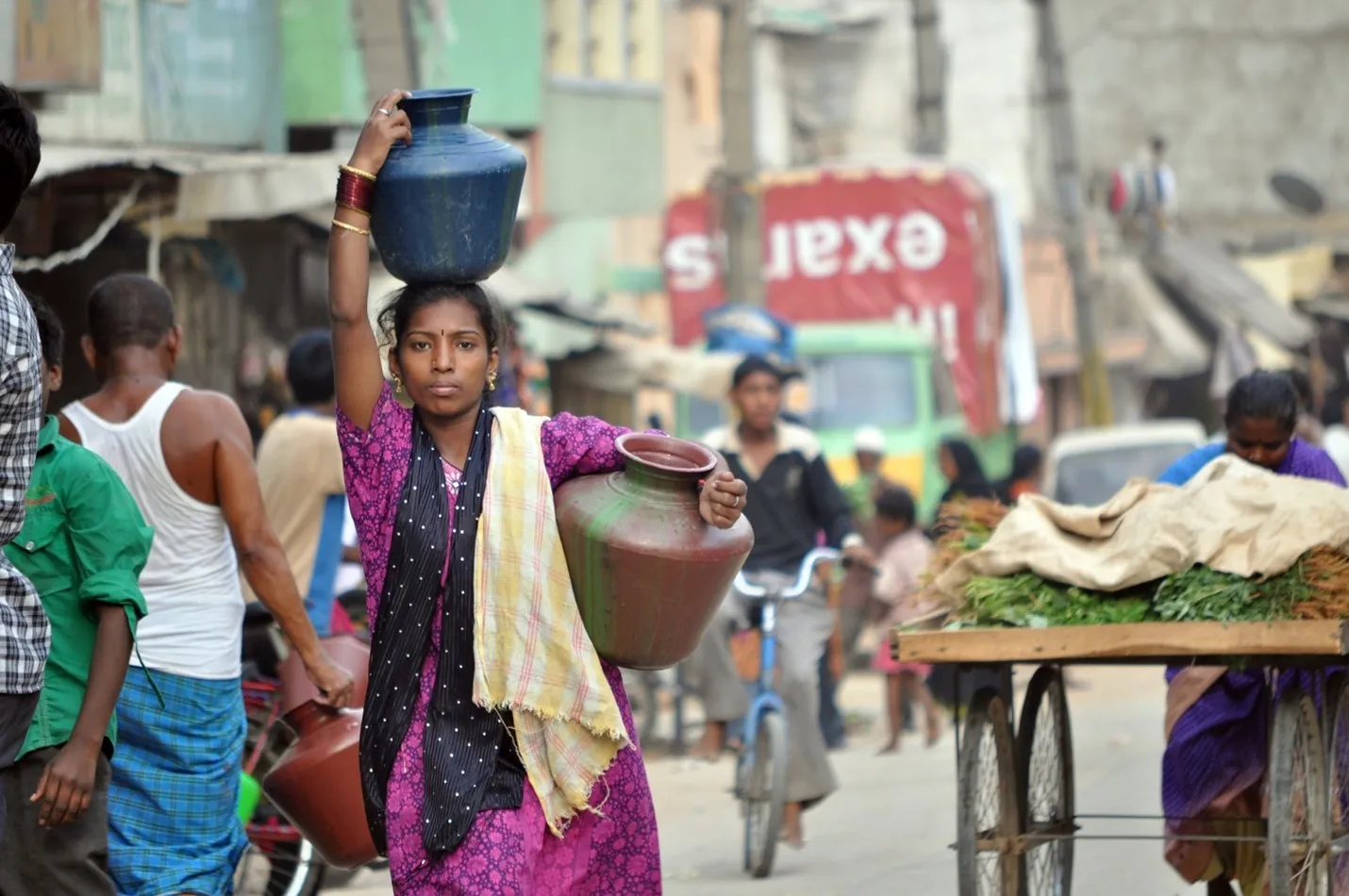How many people are affected by the global water crisis?
By Heather Arney, Senior Manager, Insights & Innovation
Published November 12th, 2021
Water is essential to life, yet millions of people around the world lack access to it. Without safe water at home, women and girls spend hours a day collecting it, and thousands of people die each year due to water, sanitation, and hygiene-related diseases.
This is the global water crisis. And in my role at Water.org, I work each day to ensure we capture and use accurate data to measure the impact from our programs, including the number of people that gain access to safe water.
While there are many statistics that demonstrate the severity of this critical issue, Water.org identifies the collective number of people impacted in two ways:

What is the difference between the numbers?
Both are accurate statistics and both address people living in the water crisis right now. The difference between the two stats is in the quality and proximity of the water individuals may obtain. Data we use about the water crisis and its impact on populations comes from a third-party source called the Joint Monitoring Programme (JMP), a program implemented by the World Health Organization and UNICEF to provide regular reporting on the progress of global water supply, sanitation and hygiene.
One of the stats we use is that two billion people in the world lack access to a safely managed water service, which is an improved water source that is accessible on premises, available when needed and free of contamination. Meanwhile, the other stat we share states that 771 million people lack access to what is considered basic water in the form of a nearby, improved source of water. An improved water source, by nature of its design and construction, has the potential to deliver safe water.
The following Drinking Water Ladder from the JMP demonstrates the varying levels of water accessed by the sum of all people facing the water crisis.

The JMP subdivides the population using improved sources of water into three groups according to the level of service provided – limited, basic and safely managed. The JMP also differentiates populations using unimproved sources such as unprotected wells or springs, and populations drinking surface water collected directly from a river, dam, lake, stream or irrigation canal.
Moving up the ladder toward safe water for all
To achieve safe water for everyone everywhere, we can’t ignore the fact that, with millions affected - living in various climates and regions and at different socioeconomic levels - there is not a one-size-fits-all solution to each of their water crises. This is evident when looking at the levels of water service defined by the JMP, as people get the water they need to survive from various sources with varying degrees of quality. This is why we created WaterCredit. WaterCredit makes small, affordable loans available to people in poverty so they can finance household water solutions.
The 771 million people who lack access to an improved source of safe water are the people we serve. WaterCredit is primarily aimed at helping these families get affordable, first-time access to water that is safe and more accessible. They pay high prices for water in time and money – they collect water from unsafe, distant sources or they pay large portions of their income to buy temporary access to it. Many of them can get an improved source of water in their home for a fraction of their annual water costs. They need access to affordable financing to make it a reality—moving them from limited, unimproved or surface water sources to basic, improved access as defined by the JMP.
The safe water sources made possible by the small loans include piped water connections, boreholes or tube wells, protected dug wells, or harvested rainwater. These sources available, problems turn into potential — unlocking equity, improving health, enabling education and creating economic opportunities. While our solutions most directly serve the 771 million people who lack access to safe water, we work to help the whole sum of people facing the water crisis continue up the water ladder to the level of “Safely managed.”

Improved sources of water change lives
Right now, today, as you are reading this, millions of people need access to safe water. They need it close, not far away. And they need it today, tomorrow, and for years to come. They need someone like you to help them make their family’s safe water solution possible. The global water crisis is the most critical social issue of our time. We’ve empowered more than 40 million people with access to safe water or sanitation to date and with your support, we can make more progress. Together we will create health, hope, and a bright future for all.
